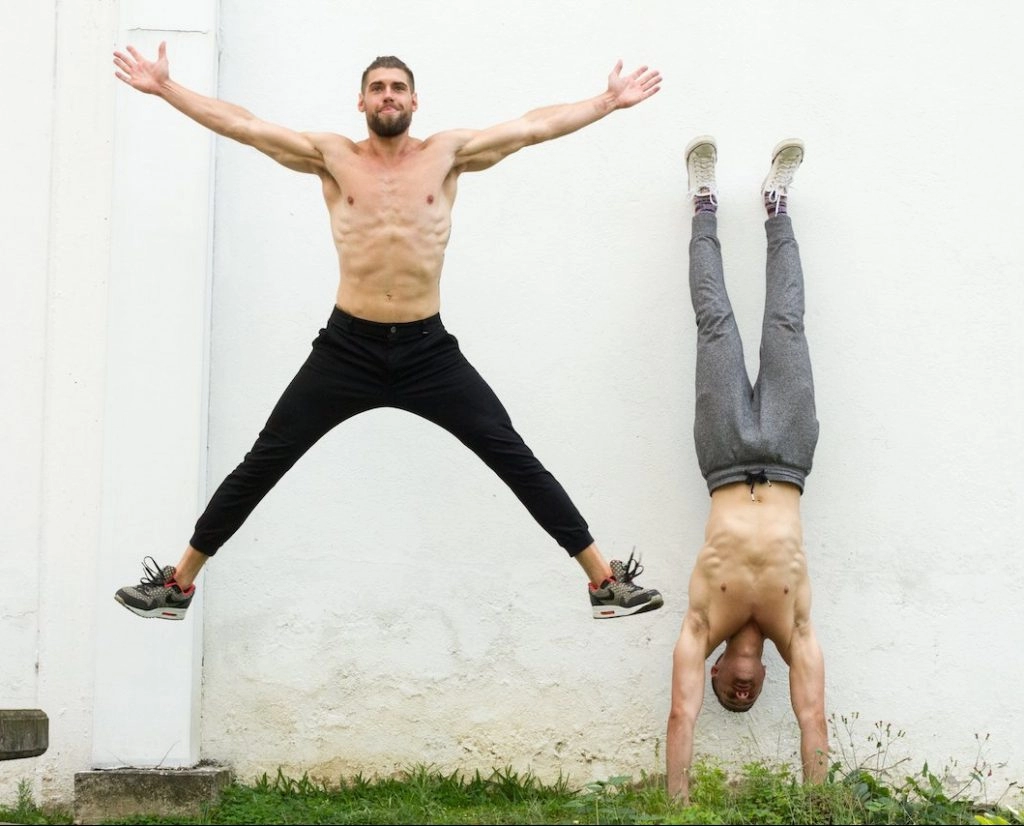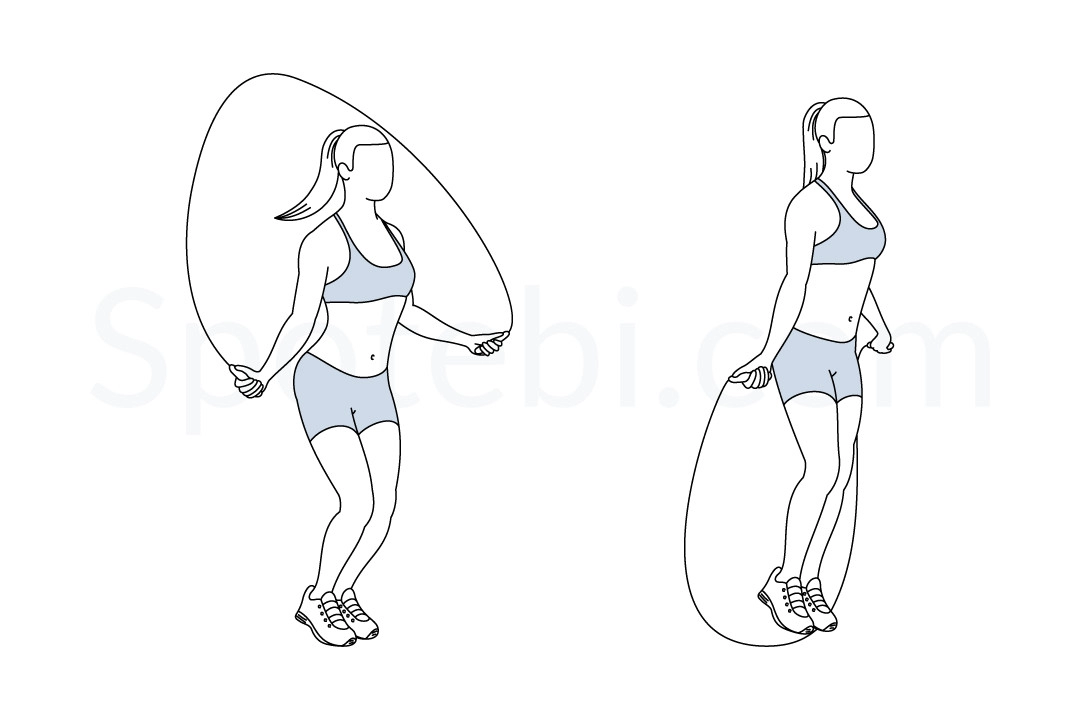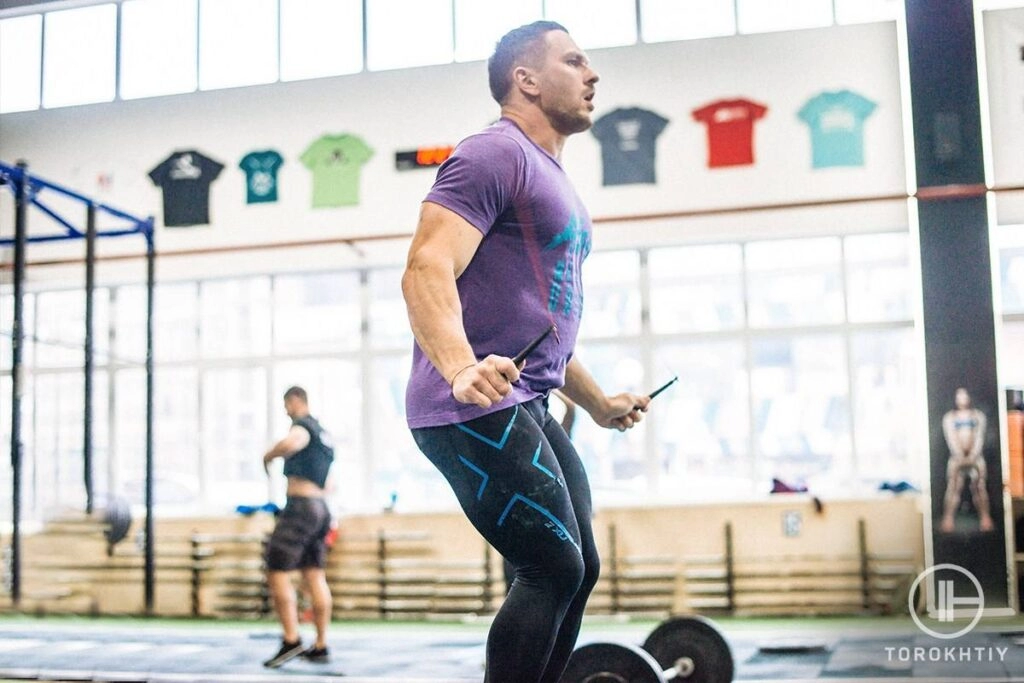The Basics of Proper Jump Rope Form
Mastering proper jump rope form is essential for effective workouts and injury prevention. It starts with maintaining correct posture—keep your body upright and relaxed to allow smooth, controlled movements. Avoid leaning forward or slouching, as this can lead to fatigue and poor technique.
Posture and Body Alignment
- Stand tall with your head up, shoulders relaxed but stable
- Engage your core lightly to support balance
- Keep your gaze forward, not down at your feet
The Ideal Grip and Hand Positioning
Holding the jump rope handles correctly improves control and reduces tension:
- Use a light but firm grip, avoiding a tight clutch that causes wrist fatigue
- Hold the handles near the ends for optimal leverage
- Keep your palms facing inward slightly, allowing natural wrist movement
Arm and Elbow Positioning for Efficiency
Minimal arm movement is key to conserving energy and maintaining rhythm:
- Keep your elbows close to your sides
- Let the forearms do most of the work, avoiding large arm swings
- Keep your arms bent at roughly 90 degrees for better control
Wrist Rotation Drives Rope Motion
Your wrists provide the primary power for turning the rope:
- Use small, controlled wrist rotations rather than large arm swings
- This helps maintain a steady rope speed and prevents tangling
- Practice smooth, consistent flicks of the wrists for efficient movement
Foot Placement and Jumping Technique
Proper footwork makes jumping easier and reduces joint impact:
- Land softly on the balls of your feet rather than flat-footed or heels
- Keep jumps low—just enough to clear the rope to conserve energy
- Maintain balance by keeping feet close together and aligned under the hips
By focusing on these fundamentals—posture, grip, arm and wrist positioning, and footwork—you establish a solid foundation for mastering jump rope technique that is both efficient and injury-free.
Step by Step Guide to Mastering Proper Jump Rope Form

To get your jump rope technique right and avoid injury, it starts with a solid routine. Here’s how you can master proper jump rope form, from preparing your space to fixing common mistakes.
Preparing Your Space and Equipment
- Choose a clear, flat surface with enough room to swing your rope without hitting anything. Wood or rubber floors work best to reduce impact.
- Use the right jump rope for your height and skill. PVC jump ropes are great because they’re lightweight and flexible, helping you maintain consistent form.
- Wear proper shoes with good support and cushioning to protect your feet and ankles.
Warm Up Exercises to Reduce Injury Risks
Before jumping in, warm your muscles and joints to prevent strains:
- Ankle circles and toe taps to loosen up your feet.
- Arm swings and shoulder rolls to prepare your wrists and arms.
- Light jogging or marching in place for about 3-5 minutes to get your heart rate up.
Starting with Slow Jump Rope Steps Focusing on Form
- Start with basic two-foot jumps at a slow pace.
- Keep your body upright and relaxed, avoiding leaning forward or backward.
- Focus on using your wrists to turn the rope, not your arms.
- Land softly on the balls of your feet to minimize impact.
Gradually Increasing Speed While Maintaining Technique
- Once you feel comfortable with slow jumps, gradually speed up but keep all form elements intact.
- Avoid rushing or losing posture as you increase pace.
- Use consistent, small jumps rather than big bounces to conserve energy.
- Maintain a steady breathing rhythm to support cardiovascular endurance.
Common Beginner Mistakes and How to Correct Them
- Jumping too high – Keep your jumps low to save energy and avoid fatigue.
- Using your arms instead of wrists to turn the rope – Focus on wrist rotation for smoother, more efficient swings.
- Looking down or slouching – Keep your head up and back straight to protect your neck and maintain balance.
- Gripping handles too tightly – Hold them lightly to avoid tension in your hands and wrists.
- Landing flat-footed or on your heels – Always land on the balls of your feet to reduce impact stress.
By following these steps and paying attention to your jump rope workout form, you’ll build better endurance, coordination, and prevent common injuries. Stick with it, and you’ll notice improvements in your speed and rhythm faster than you expect.
Benefits of Maintaining Proper Jump Rope Form
Keeping the proper jump rope form isn’t just about looking good while you exercise—it plays a big role in how effective and safe your workout is. Here’s why focusing on the right technique makes a difference:
Injury Prevention
One of the biggest benefits of jump rope workout form is avoiding injuries. When your posture is correct and your movements are controlled:
- You reduce strain on your joints, especially knees, ankles, wrists, and shoulders.
- Proper foot placement and light landings help prevent shin splints and impact injuries.
- Efficient arm and wrist motion lower the chances of repetitive stress or muscle overuse.
Sticking to good form means you can train longer without unnecessary aches or pains.
Improved Cardiovascular Endurance and Coordination
Using the right jump rope posture and arm movement improves how your body works together. This leads to:
- Better heart and lung fitness as consistent rhythm keeps your cardio system challenged.
- Enhanced coordination because your arms, wrists, and feet move in sync.
- Increased balance and timing, which helps with complex jump rope exercises and other sports.
With proper form, you get the most out of every jump, making your routine more effective.
Enhanced Calorie Burning and Muscle Toning
When you jump rope correctly, every jump is more efficient, which means:
- You burn more calories per session compared to sloppy or inconsistent jumping.
- Targeted muscle groups like calves, thighs, core, shoulders, and forearms get worked evenly.
- Better form activates your muscles fully, helping with toning and strength.
This makes your jump rope workouts a powerful tool for weight management and shaping your body.
Longer Jump Rope Session Sustainability
Maintaining beginner jump rope form or advanced technique allows you to:
- Jump longer without feeling overly fatigued or losing control.
- Improve stamina and endurance safely, making it easier to stick to your fitness goals.
- Enjoy your workout more since you’re less likely to get frustrated by mistakes or discomfort.
Good technique leads to consistent progress, so you can keep improving over time without burnout.
Focusing on jump rope technique tips helps you avoid common pitfalls while maximizing every minute of your workout. Proper form isn’t just for pros—it’s the foundation for a safe, effective, and unstoppable jump rope routine.
How PVCJumpRope.com’s Ropes Enhance Your Jump Rope Experience
Features of PVC Jump Ropes Designed for Proper Jump Rope Form
At PVCJumpRope.com, our PVC jump ropes are crafted to support proper jump rope technique right from the start. These ropes are lightweight yet durable, giving you the perfect balance between speed and control. The flexible but strong material allows smooth, consistent rope swings without unnecessary resistance, which helps maintain your rhythm and form. Plus, the handles are designed for an ergonomic grip, reducing hand tension and helping you keep your wrists relaxed — a key element in efficient jump rope workouts.
Why Using a Quality Rope Helps Maintain Correct Technique
Using a high-quality PVC rope can make a big difference in learning and sticking to good jump rope posture and movement. Here’s why:
- Consistent rope speed lets you focus on arm and wrist movement without struggling against drag.
- Reliable weight and balance mean your jumps will be smoother, reducing the chance of tripping or catching the rope.
- Soft, non-slip grips protect your hands from blisters and make it easier to maintain hand positioning for longer sessions.
- Durability ensures your form won’t be compromised by a worn-out or tangled rope as you progress.
Customer Success Stories and Case Snapshot
Many customers from around the U.S. have noticed how switching to PVCJumpRope.com ropes improved their jump rope workouts. For example, Sarah from Austin, TX shared:
“After switching to a PVCJumpRope.com rope, my coordination and timing improved noticeably. The rope feels light but sturdy, and my wrists don’t get sore anymore. It helped me nail down my form way faster.”
From beginners struggling with inconsistent swings to seasoned jumpers aiming for longer, smoother sessions, our ropes consistently receive praise for enhancing jump rope workouts and making proper jump rope form easier to achieve and sustain.
Tips to Improve Your Jump Rope Form Faster
Improving your jump rope form takes practice, but there are smart ways to speed up your progress. Whether you’re just starting or looking to refine your technique, these tips will help you master proper jump rope posture, arm movement, and foot placement efficiently.
Use Form Drills and Technique-Focused Workouts
- Break it down: Instead of jumping nonstop, focus on drills that isolate key parts of the technique—like wrist rotation or foot placement.
- Practice smooth arm and elbow positioning by doing slow rotations without jumping. This helps develop muscle memory without tiring your legs.
- Incorporate exercises like single leg hops or side-to-side jumps to improve balance and control.
Use Mirrors or Video for Self-Assessment
- Watch yourself jump in a mirror or record short videos from different angles.
- Look for common issues like tense shoulders, excessive arm movement, or incorrect foot strikes.
- Check if your grip and posture stay relaxed and upright—this visual feedback is invaluable for correcting form quickly.
Stay Consistent and Increase Intensity Gradually
- Consistency is key. Aim for short, daily sessions focused on form rather than long, tiring workouts.
- Slow down to speed up: Concentrate on clean, controlled jumps before adding speed.
- Gradually increase your pace once your technique feels solid. This prevents reinforcing bad habits and lowers injury risk.
Additional Tips for Faster Improvement
- Warm up properly to keep your body ready—jump rope posture guide often emphasizes relaxed muscles.
- Incorporate jump rope arm movement drills to build wrist strength and reduce tension in your shoulders.
- Set small, clear goals each week, like improving posture or reducing rope catches, and track your progress.
By focusing on these techniques, you’ll improve your jump rope workout form efficiently and enjoy longer, injury-free sessions.
Troubleshooting Common Issues With Proper Jump Rope Form
Even with the best intentions, it’s normal to hit some bumps mastering proper jump rope form. Let’s look at common problems like the rope hitting your feet, fatigue causing sloppy technique, and wrist or shoulder pain — plus how to fix them.
Rope Hitting Feet or Catching on the Ground Causes and Fixes
One of the most frequent issues is the rope catching on your feet or dragging on the floor. This usually happens because of:
- Incorrect rope length: If the rope is too long or too short, it’s harder to control.
- Poor wrist rotation and arm movement: Overusing your arms or not rotating your wrists efficiently can mess up timing.
- Jumping too high or inconsistent foot placement: Excessive jumps or uneven landings disrupt smooth rope rotation.
How to fix it:
- Adjust your rope length — step on the middle, handles should reach your armpits.
- Keep elbows close to your sides and use your wrists, not arms, for the rope’s motion.
- Jump lightly on the balls of your feet, lowering your jump height to maintain rhythm.
- Practice slow consistent jumps focusing on timing and smooth wrist rotation.
Fatigue Leading to Sloppy Form How to Avoid and Recover
When tired, form often breaks down, risking injury and reducing workout effectiveness. Fatigue can cause:
- Arm flailing or wide swings.
- Bent knees or poor posture.
- Flat-footed landings leading to impact stress.
Tips to avoid and recover:
- Take short breaks before fatigue peaks—don’t push through sloppy form.
- Incorporate regular rest intervals in your routine.
- Focus on breathing controlled and steady while jumping.
- Slow down your pace to regain form—quality beats speed.
Wrist Pain or Shoulder Strain Corrective Measures
Wrist pain or shoulder strain usually results from excessive tension or improper technique:
- Gripping the jump rope handles too tightly.
- Using arm muscles instead of wrists to drive the rope.
- Hunching shoulders forward or tensing neck muscles.
How to relieve and prevent pain:
- Use a light, relaxed grip on handles—avoid squeezing hard.
- Keep your wrists flexible and rotate gently to turn the rope.
- Maintain upright posture with shoulders relaxed and down.
- Stretch wrists and shoulders before and after workouts.
- If pain persists, rest and consider trying ropes designed for comfort like PVC jump ropes.
Proper troubleshooting saves time and keeps your jump rope sessions effective and injury-free. Focus on these small adjustments, and your jump rope technique will improve steadily and sustainably.



